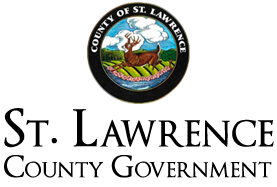by Jason Pfotenhauer, St. Lawrence County Planning Office
The following opinion piece was published in the Merwin Rural Services Institute's newsletter, North Country Local Government Newsletter 9/97.
Introduction
Is your municipality having problems with illegal subdivisions? It has recently come to the attention of St. Lawrence County planning officials that some subdivisions that have been filed with the County Clerk do not conform with local subdivision regulations. Once filed with the clerk’s office, a subdivision is legal at the state level. Local subdivision regulations specify standards that are necessary for the orderly, efficient and economical division of land within municipalities. If such regulations are not followed, the community as a whole can suffer. This article defines subdivisions, gives information on subdivision recording and enforcement and describes what actions St. Lawrence County took to identify and lessen their illegal subdivision problem.
What exactly is a subdivision?
New York State Law defines subdivision as "The division of any parcel of land into a number of lots, blocks or sites as specified in a local ordinance, law, rule or regulation, with or without streets or highways, for the purpose of sale, transfer of ownership, or development". Subdivision is the primary way that property boundaries are changed and new properties created.
Before being created, subdivisions are normally described on paper by what is known as a "plat". A plat is simply a plan for developing a piece of undeveloped property. Not all land division requires the approval of a plat. Local laws specify how many lots can be subdivided before a plat must be approved by a local planning board.
Recording subdivision plats
New York State City, Town and Village Law state that "no plat of a subdivision of land showing lots, blocks or sites, shall be filed or recorded in the office of the county clerk or register until it has been approved by a planning board which has been empowered to approve such plats". Despite this, it appears that some subdivision plats that do not conform with local regulations are being recorded at the county level. Section 333 of the State Real Property Law appears to contradict City, Town and Village Law by allowing for plats to be filed without local city, town or village planning board approval. This loophole makes enforcement of local subdivision regulations all the more difficult.
Subdivision regulation enforcement
Local code enforcement officials play the most important role in controlling illegal subdivisions. Fines and periods of imprisonment are noted in state law as specific penalties for violators of local subdivision regulations.
The State Department of Health also plays a role in enforcement. Department of Health approval is necessary for any subdivision of five lots or more if the lots are five or fewer acres in size and are sold within a consecutive three year time period. Large subdivisions may require New York State Department of Environmental Conservation approval for sewerage.
What St. Lawrence County Has Done
St. Lawrence County carried out three tasks in an effort to better understand the extent of the problem and to educate those involved in subdividing land.
The County Planning Board conducted a sample survey of RP 5217 forms processed in the County Clerk’s office. The RP 5217 is a state form that must be filed when property is subdivided and sold. The Planning Board examined the forms to see if any property transfers were carried out without regard for local subdivision regulations. The County Planning Board also produced a newsletter that gave background information on land subdivision. Included in this newsletter was a survey that asked local planning boards if they were aware of land being subdivided illegally in their municipalities. Finally, a news brief that listed all municipalities within the county that have subdivision regulations and specifics about each regulatory document was produced. The news brief was distributed widely to those involved in land subdivision (attorneys, developers, surveyors and real estate agents).
Local subdivision regulations have a purpose -- an orderly, efficient process for overseeing the division of land and providing needed infrastructure. If locally illegal subdivisions are occurring in your municipality, educational initiatives that provide a better understanding of local regulations may help to reduce the problem.
For more information on the St. Lawrence County initiative call Jason Pfotenhauer at (315) 379-2292.

